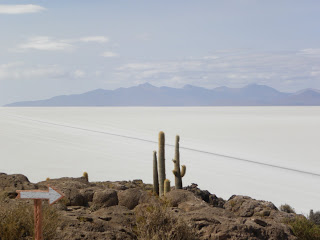Arriving at the PSF house we were warmly welcomed by a bunch of hung-over residents. Sunday is the only day off work so we spent most of the day settling in and meeting new people. We chose our bunk room know as the ‘penthouse’, a bamboo and tarpaulin construction on top of the roof of the main house. An adequate place to rest your head after a hard days’ work.
Work at PSF is done Monday to Friday and a half day on Saturday. Every morning we have a team meeting where we get the chance to find out about new projects and choose the project we wish to be a part of for that day. The PSF headquarters where we are staying includes one big house, a work yard, tool shed, kitchen and admin office. This is where all the meetings are held and where we all eat. Alternative accommodation is located around the corner as well as at a nearby hostel if need be. There are currently around 50 volunteers but two months prior they had reached over 100. An organised chaos we can only imagine. It all seems to work very smoothly with everyone taking responsibility for themselves. Breakfast and dinner are cooked by the volunteers as are the daily duties including cleaning and other tasks. Lunch is usually at a restaurant nearby to the work site or is cooked by the locals involved in the particular project being worked on. We were fortunate to sample some local cooking one day during the week where a neighbour prepared a delightful lunch of ceviche followed with two whole fried fish served on rice.

As we had arrived a week before Christmas it was a time when a lot of projects were winding down for PSF. Therefore our first week of work which was only 4 days, included a big range of activities and we helped out where required. We poured a concrete floor, constructed chairs and bunk-beds, played with children at a day care centre, erected a prefab medical centre and built a wall for Juan, an elderly man.

Juan lives an incredibly basic life in the invasion community known as El Molino. This community of shelter housing has only existed since the earthquake. People fled from their homes basically becoming refugees and built what they could on this vacant piece of land. Only now is the government acknowledging their presence and is considering assigning titles to the families so that more permanent homes can be built here. El Molino has no sewerage system and offers little job opportunities for those living there. PSF does a lot of work in El Molino but has been restricted lately with the uncertainty of land titles and therefore having to relocate buildings, a waste of everyone’s time and money.

This mixture of work has been enjoyable but we are looking forward to perhaps sinking our teeth into a longer term project. Something we can follow through the different project phases and hopefully learn more skills. This opportunity may come in the new year once the wave of new people have arrived and more projects begin. However I must say that in one short week of work I personally have learnt to swing a hammer, mix concrete, operate a skill saw, use a drill, and purchase breakfast ingredients for 50 people in Spanish.
Our first impressions of PSF as an organisation are extremely positive, everyone involved is passionate and extremely hard working. The positive impact of PSF in the Pisco community over time is clearly evident; from newly erected schools, homes, a medical centre, murals and even the smile and wave from people as we drive through town in the truck. We are proud and excited to be a part of this organisation for a few weeks.
Christmas was always going to be a big deal here at PSF. With 50 or so international travellers missing the comforts of a home Christmas - PSF went huge and had a pig on a spit. With Christmas Eve off work some of us headed to the markets to buy ingredients for the following days’ feast. With an extremely hot day and hundreds of people looking to purchase their last minute food and gifts – it was one crazy experience. Live turkey anyone?

The remainder of the day was spent helping to prepare the food and finished with mulled wine, mince pies and carols in the evening. Christmas Eve itself is the big deal over here. Families gather to open presents and have dinner around midnight. Also fireworks (which are incredibly unregulated here) are let off at midnight to celebrate. We were treated to a half hour display of fireworks all over Pisco viewed from the roof top of our building.
Waking early Christmas morning I made the trifles. Unfortunately Cam did not make it out of bed due to the dreaded ‘Pisco Belly’ and shortly after lunch I was in bed with the same. We managed to get up and have some dinner that night. The pork was a success and served with turkey and all the trimmings we were certainly very spoilt. However we missed desert and were back in bed by 9pm, ah the delight of living in Pisco!


For Boxing day there was a planned group trip to a near-by beach, but unfortunately the prospect of a night with no toilets was not something Cam and I could face. Again, the day was spent in bed reading, not ideal at all.
Raiding our first aid kits, we can only hope the rehydration salts and antibiotics work their magic to allow for New Year celebrations this coming week.

























































